00:49
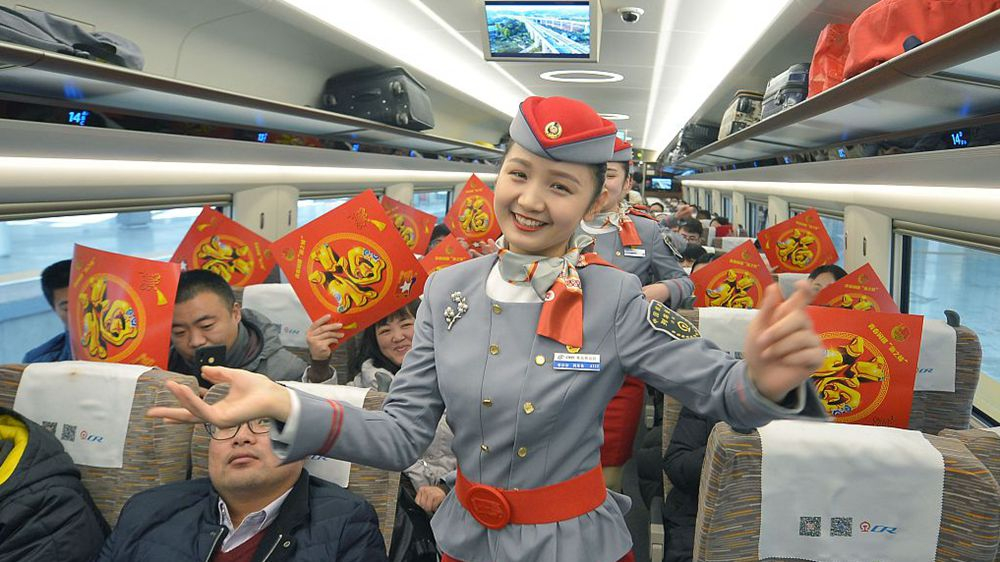
As the traditional Chinese New Spring Festival falls on February 5, the world's most populated country is ready to embrace the 2019 Spring Festival travel rush, known as the Chunyun in Chinese, as people from nationwide return their hometowns to enjoy the family reunion.
Beginning today, the 40-day travel rush, famous as the planet's largest human migration, will last until March 1 and see nearly three billion trips, which is more than four times of European population.
The figure is up 0.6 percent year on year, said Lian Weiliang, deputy head of the National Development and Reform Commission, during a news conference on Friday.
Among the three billion trips, the road trips take up a lion share as it totals 2.46 billion, however, this travel mode sees a decrease of 0.8 percent in comparison with the same period in 2018.
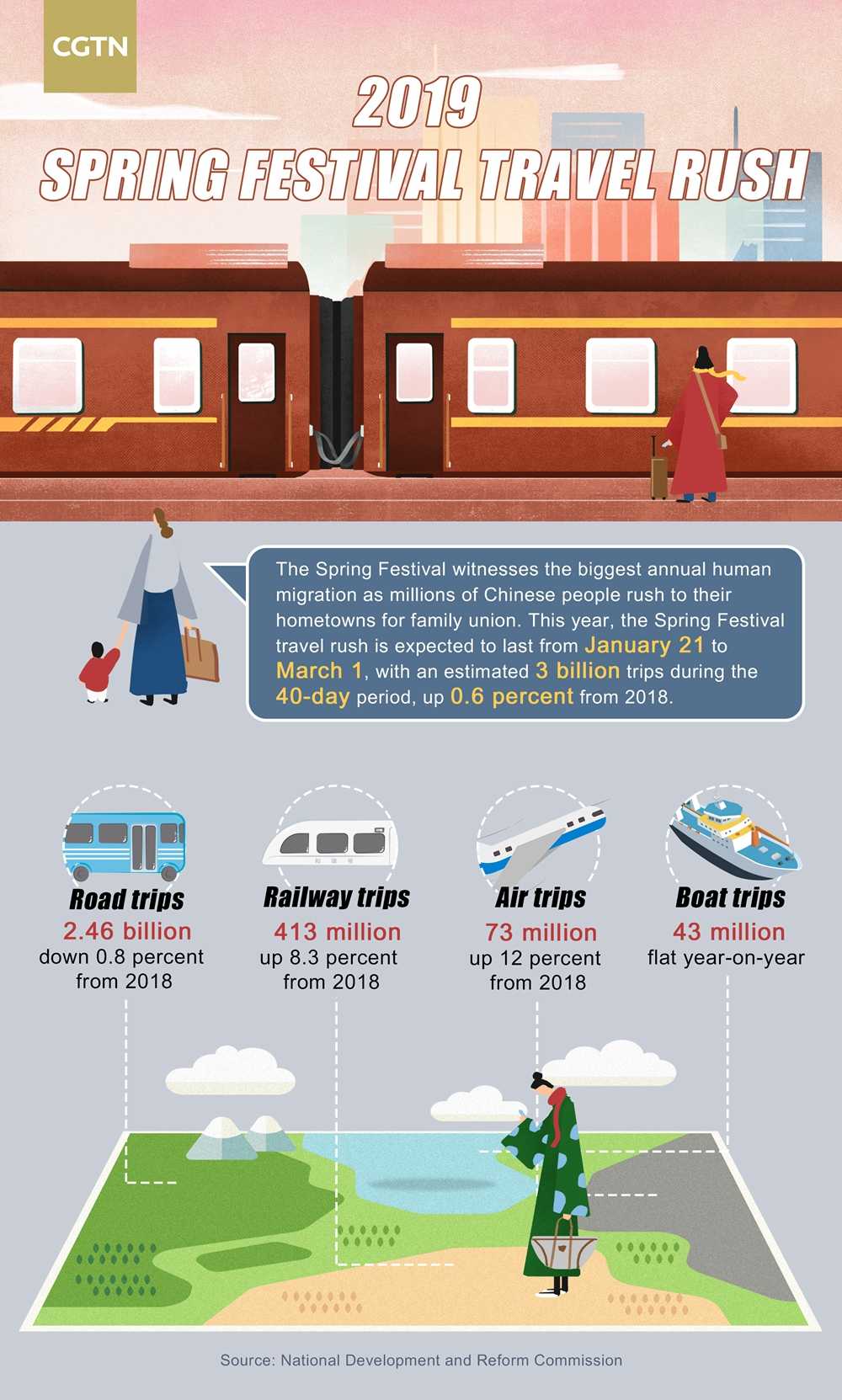
The infographic shows the different trips in the 2019 Spring Festival travel rush. /CGTN Photo
The infographic shows the different trips in the 2019 Spring Festival travel rush. /CGTN Photo
Meanwhile, it is easy to find that both the railway trips and air trips see a clear growth. For example, the number of railway and airplane trips are projected to hit 413 million and 73 million, respectively up 8.3 percent and 12 percent year-on-year.
There are no noticeable changes in boat trips, which show a flat year-on-year growth with 43 million trips.
The two favored trips not only reflect the advances in travel infrastructure in China in recent years but also show the government's efforts in enhancing transportation capacity.
"A total of 4,787 and 4,860 two-way train services will be scheduled a day before and after the festival respectively, up 5.4 percent and 5.2 percent compared with the same period last year," Lian said.
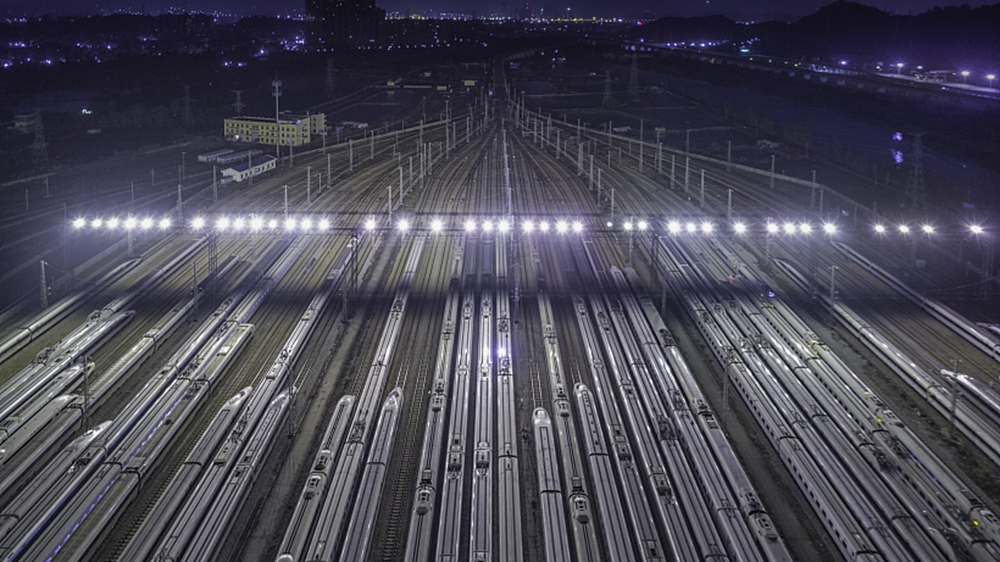
The bullet trains are ready to undergo maintenance at the maintenance center in Guangzhou city, south China's Guangdong Province, January 18, 2019. /VCG Photo
The bullet trains are ready to undergo maintenance at the maintenance center in Guangzhou city, south China's Guangdong Province, January 18, 2019. /VCG Photo
New strategies to make the travel rush more convenient
The ongoing travel rush boasts the debut of the first batch of bullet trains running at a speed of 160 kilometers per hour.
Facial recognition technology, which aims to speed up ticket checks as passengers' faces can be used as tickets, sees its use ranging from the railway stations and airports in major first-tier cities including Beijing and Shanghai to those in the third or fourth-tier cities including Luoyang in central China's Henan province.
There is a new kind of "ticketless travel" at the stations where facial recognition hasn't been applied. Instead of buying tickets online and collecting them at the stations, travelers can pass ticket checks by scanning QR codes using their phones and pay afterwards.
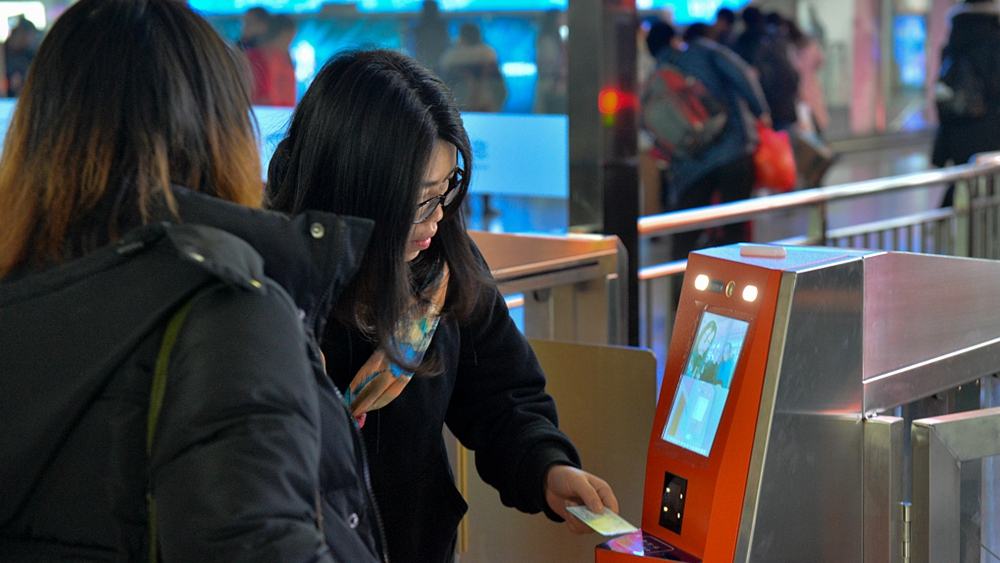
A passenger uses the facial recognition technology to enter the Hangzhoudong Railway Station in Hangzhou City, east China's Zhejiang Province, January 19, 2019. /VCG Photo
A passenger uses the facial recognition technology to enter the Hangzhoudong Railway Station in Hangzhou City, east China's Zhejiang Province, January 19, 2019. /VCG Photo
China's official website for train ticket booking, 12306.com, has introduced a new function to boost buyers' chance of obtaining a ticket because it's common to see all the available tickets sell out in seconds.
The new function is said to be able to automatically allocate canceled train tickets to other buyers who have paid in advance when tickets have sold out. This definitely will save passengers the trouble of refreshing the website repeatedly to wait for canceled tickets, let alone the challenges posed by ticket-snatching plug-ins.
Many passengers show their support for the new function. "There is finally a good solution," said an internet user named Donglunanxuan, whose comment got 9368 likes.
Growing trend on reverse Spring Festival travel rush
In recent years, there is a growing popular phenomenon called reverse Spring Festival travel rush, meaning that more and more young dream seekers in urban areas invite their parents to travel from their hometowns to spend Spring Festival with them in the big cities.
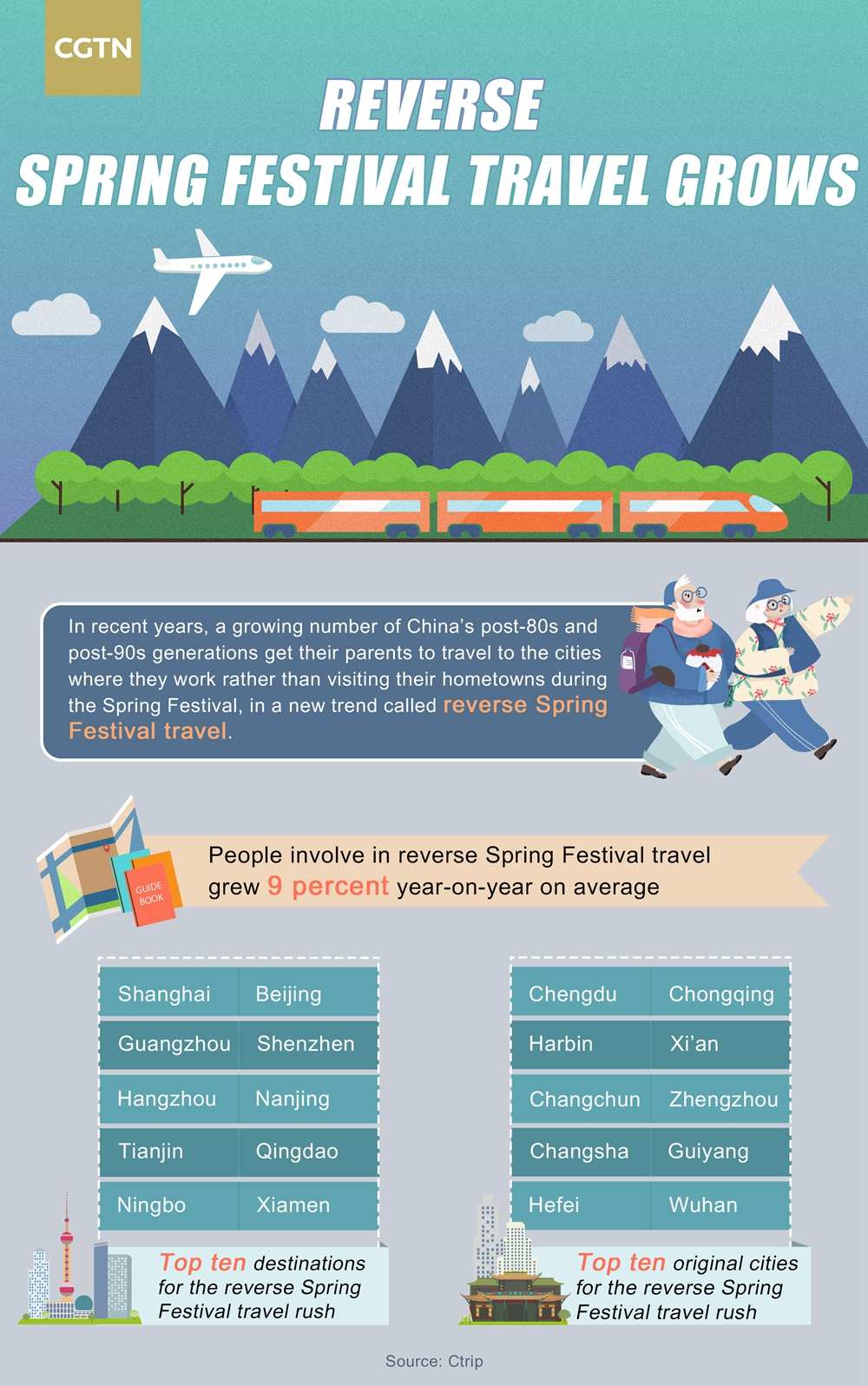
The infographic shows the trendy reverse Spring Festival travel rush in China. /CGTN Photo
The infographic shows the trendy reverse Spring Festival travel rush in China. /CGTN Photo
It's reported that people involving in this kind of travel rush will grow nine percent year on year on average.
The top ten destinations for the reverse travel rush are Shanghai, Beijing, Guangzhou, Shenzhen, Hangzhou, Nanjing, Tianjin, Qingdao, Ningbo, Xiamen, according to Ctrip, China's largest online travel agency.
Data from the agency shows that the number of ticket bookings of the flights bound for the ten destinations sees an increase of more than 40 percent year-on-year within the week before the News Spring Festival eve.
Experts say this has much to do with the rare-to-buy tickets or the pricey flight tickets because the flights on the route of reverse travel rush often have plenty tickets and most of them enjoy a relatively lower price with varied discounts.
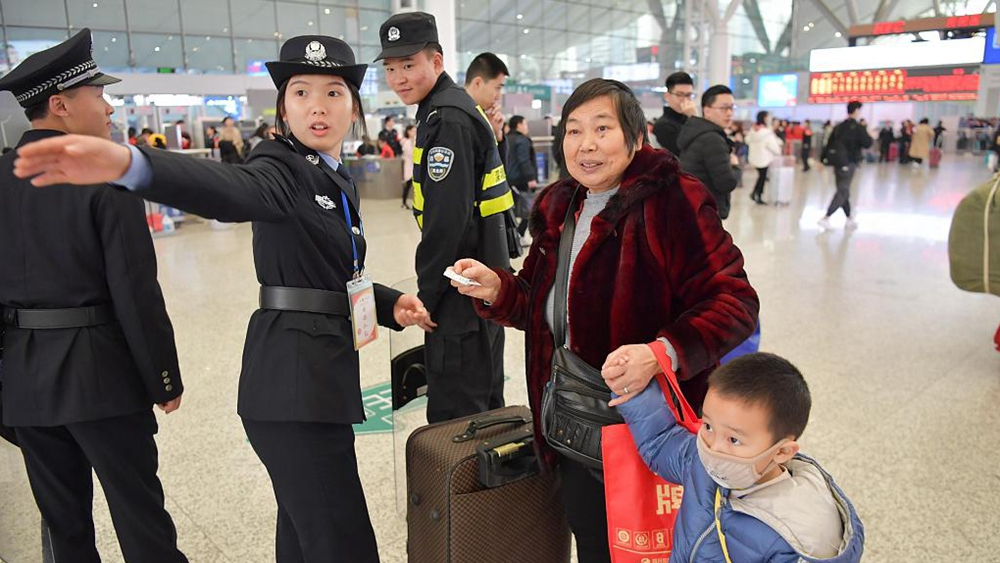
A policewoman guides an elderly woman at Shenzhenbei Railway Station in Shenzhen City, south China's Guangdong Province, January 21, 2019. /VCG Photo
A policewoman guides an elderly woman at Shenzhenbei Railway Station in Shenzhen City, south China's Guangdong Province, January 21, 2019. /VCG Photo
Besides a big save on travel expense, the young urban migrants can spend more time with their parents and let their parents know the cities they work and live because New Spring Festival holiday is a seven-day holiday.
The data also listed top ten original cities for the reverse Spring Festival travel rush, namely Chengdu, Chongqing, Harbin, Xi'an, Changchun, Zhengzhou, Changsha, Guiyang, Hefei and Wuhan.
It's easy to find that the provinces where these top original cities belong to are the major exporter of labor service.
With the trend, many say that major cities including Beijing and Shanghai will be no longer "empty" which they used to face, as more and more young workers returning their hometowns.







